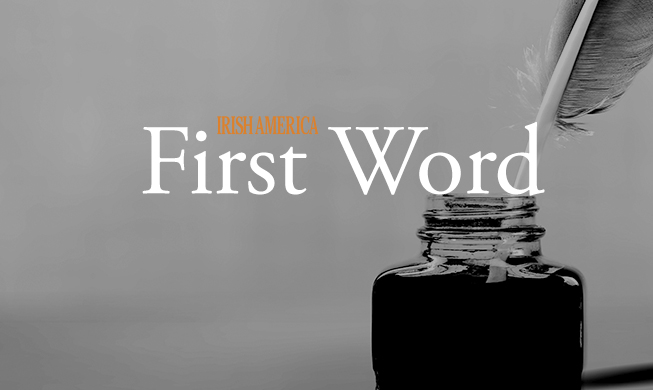
In this issue we celebrate the realization of the American dream by so many of our people, reminding us once again of the good fit this country has proved to be for the Irish.
Not that it happened overnight. In the words of Robert Kennedy: “As the first of the racial minorities our forefathers were subject to every discrimination found wherever discrimination is known.”
The Irish first came to these shores in significant numbers in the 17th century, some as indentured servants, bondsmen, rebels, and adventurers. Many who were banished as slaves to the West Indies eventually made it to Massachusetts, where one, Goody Glover, was hanged as a “witch” in 1688.
During the years 1820 to 1840 nearly a quarter of a million Irish immigrants entered the United States. Through sheer force of numbers the leadership of Tammany Hall successfully fought for the removal of property qualifications that prevented many poor immigrants from voting. The Irish turned out in force for the New York City elections of 1827.
The Irish Famine was the beginning of a new phase in the story of the Irish in America. Between 1840 and 1860, 1.7 million men, women, and children entered the United States from Ireland. The new immigrants became what one historian called “pioneers of the American ghetto.”
It is the memory of these “pioneers” that we celebrate in this issue. For out of their struggle grew the greatest community organization of a people in the history of the United States. The schools, hospitals, political clubs and labor organizations left their mark on America for ever.
The term “Shanty Irish” was coined to describe these Famine immigrants, and an intriguing part of the Irish in America story was uncovered recently at an exhibition opened during Black History Month. Seneca Village, the birthplace of two of Tammany Hall’s leaders, was razed to make way for New York’s Central Park. Branded a shanty town, it was, in fact, a well-established minority community, where Irish and German immigrants lived side-by-side with black Americans.
It’s story of interracial living that we embrace as this year more than ever we honor those in our Top 100 who are Irish and “something else:” Italian, Mexican, German, and black American as represented by anchorman Paul Berry and Derek Jeter, the Yankees’ Rookie of the Year.
A fascinating aspect of the story of who we are today are those “others” we have met on the journey. Who among us is not intrigued that in Mexico City each year there is a commemoration in honor of the San Patricio Battalion, the Irish who fought on the Mexican side in the war of 1846. In their memory we honor that great actor of Irish and Mexican descent, Anthony Quinn.
Another of our Top 100, Gary White Deer, represents the Choctaw tribe who donated $170 towards Irish Famine relief on March 22, 1847.
This St. Patrick’s Day, then, as we recall our own journey towards success, let us remember the words of an Irish American who did much in the cause of advancing human freedom world-wide.
Robert Kennedy in his first public appearance since the assassination of his brother spoke at a Friendly Sons of St. Patrick Dinner in Scranton, Pennsylvania. He recalled the discrimination that the Irish had suffered and reminded the listeners that there were still “walls of silent conspiracy that block the progress of others because of race or creed, without regard to ability.”
Kennedy closed his speech with these final words: “On this St. Patrick’s evening let me urge you one final time to recall the heritage of the Irish. Let us hold out our hands to those who struggle for freedom today — at home and abroad….Let us show them that we have not forgotten the constancy and the faith and the hope of the Irish.”
That legacy of human rights for all men we celebrate in honoring Edward Kennedy as Irish American of the Year. By contributing much by way of humanitarian legislation in his many years as a United States Senator, he has shown that he has not forgotten the “heritage” of the Irish. As the “struggles” in the North of Ireland continue, we need his continued support and commitment towards a peaceful settlement.
Editor’s Note: This article was originally published in the March/April 1997 issue of Irish America. ⬥


Leave a Reply